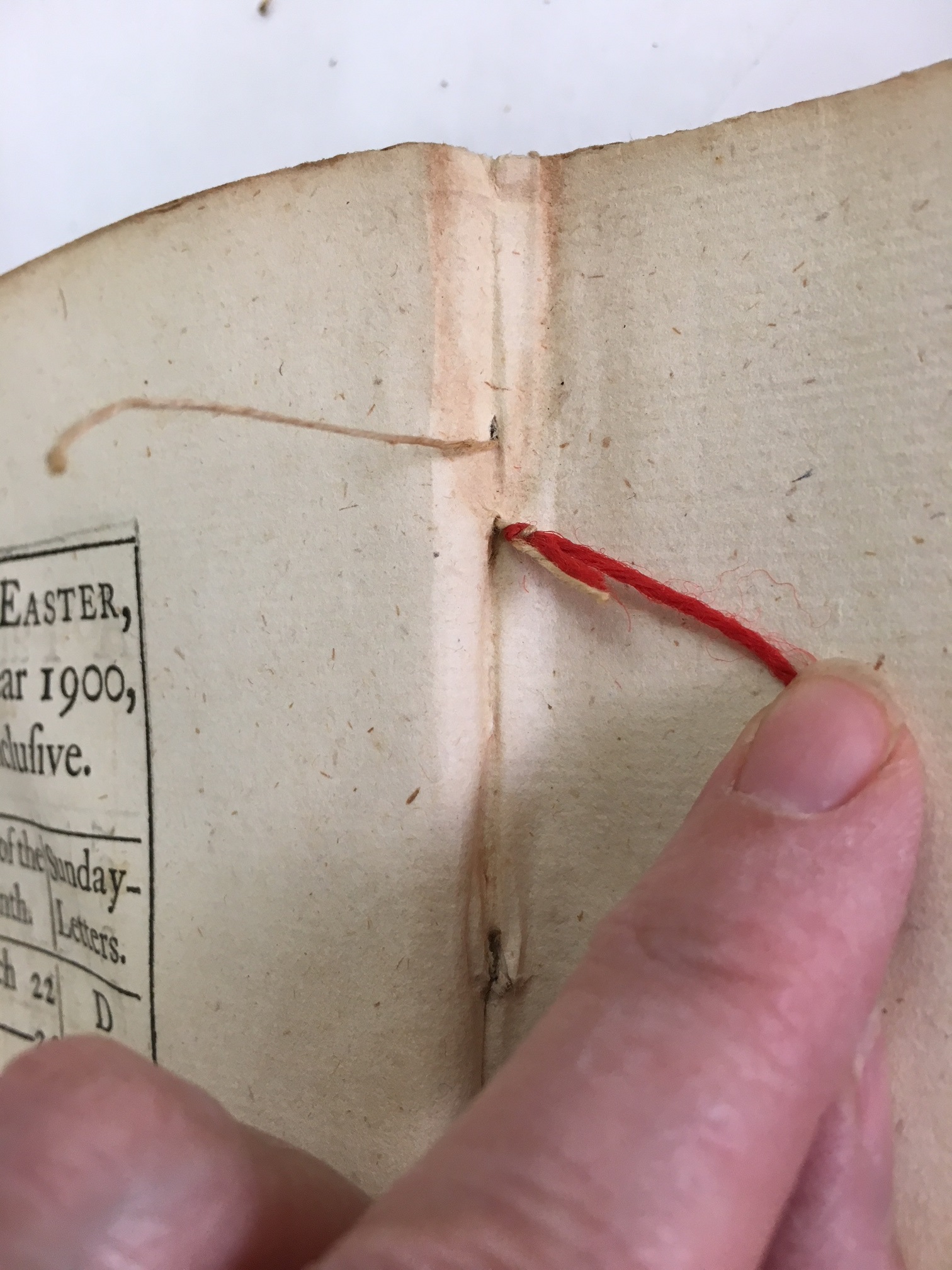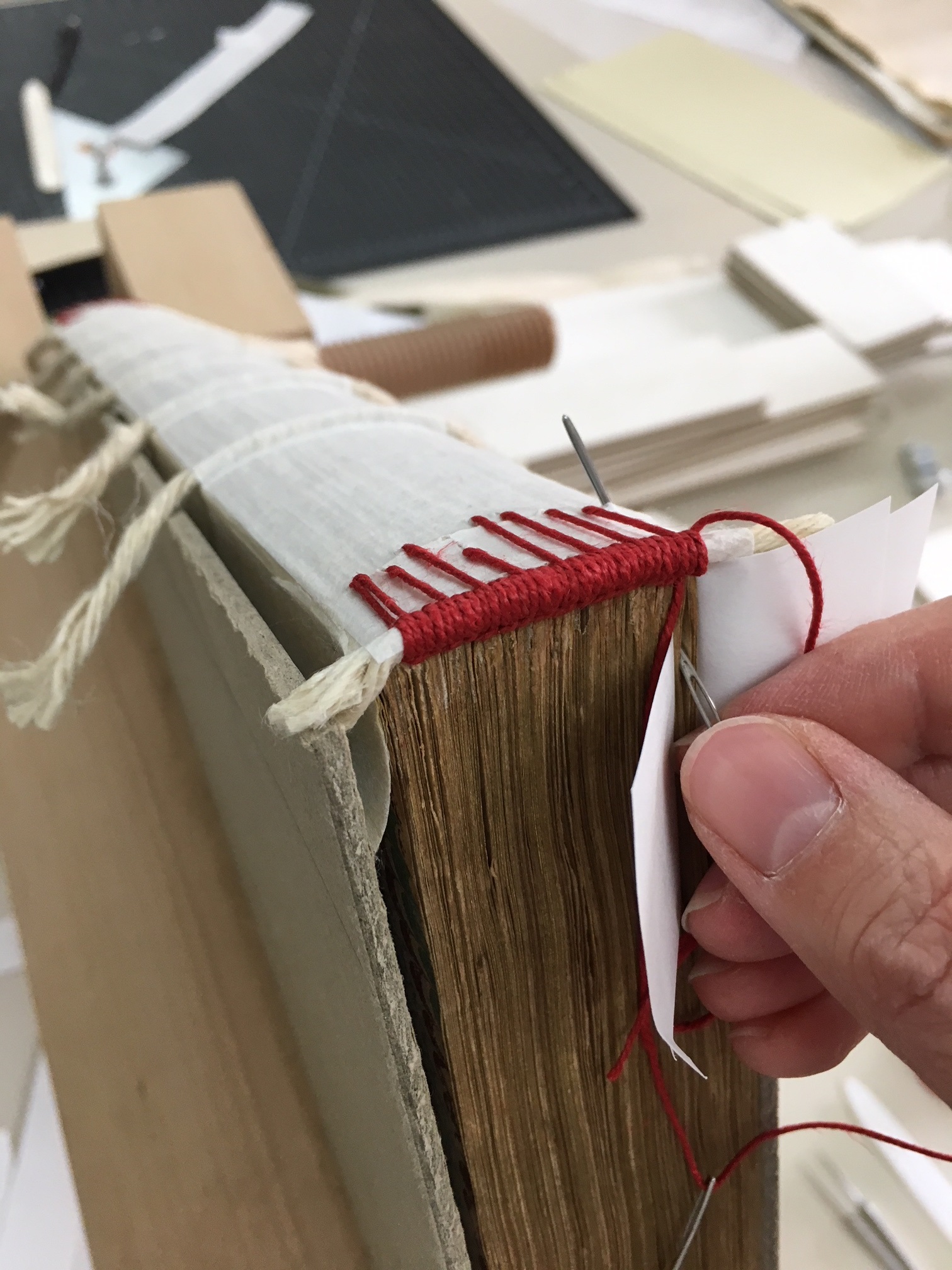Ben Franklin Is All Sewn Up
My apologies for the much-delayed fifth installment in the saga of Ben Franklin’s Book of Common Prayer! In my last post, I discussed the original sewing of the book, and how it was disbound for further conservation treatment. Those stages involved washing the book leaves in purified water (a process described by APS Conservation Intern Kate Aguirre here), drying them, and then mending them with Asian paper and wheat starch paste (materials long prized by conservators for their strength, chemical stability, and reversibility).
I re-sewed the cleaned, mended book leaves following the pattern established by the original binder. This recreated the book’s text block, or all of the pages in the correct order as provided by the printer. I also reattached the book’s original endleaves of marbled paper. Like the original binder, I used six thick linen cords as sewing supports. The completed text block is shown above, with the marbled paper flyleaf uppermost. The thick Asian paper hinge along the right side will serve to bridge the gap between the repaired text block and the book’s binding.
When the text block was complete, I consolidated its spine with wheat starch paste to keep the sections from splitting apart in the gutter. I also rounded the spine slightly to approximate its original shape, and lined the spine with layers of Asian paper to reinforce it.

APS Curator of Printed Materials David Gary then asked me to sew new red endbands at the top and bottom of the spine. While documenting the book prior to taking it apart, I had found short lengths of fuzzy red thread (perhaps wool!) in the gutter of the book. These suggested that the book originally had bright red endbands, or embroidered cords at the top and bottom of the spine. Recreating them would make the book look more like it did when Franklin owned it.

To create the new endbands, I wrapped a length of linen cord with red linen thread and secured it to the text block by sewing through the spine folds of the book sections in a regular pattern. When the sewing and endbands were complete, the text of Ben Franklin’s Book of Common Prayer was ready for its new binding.

